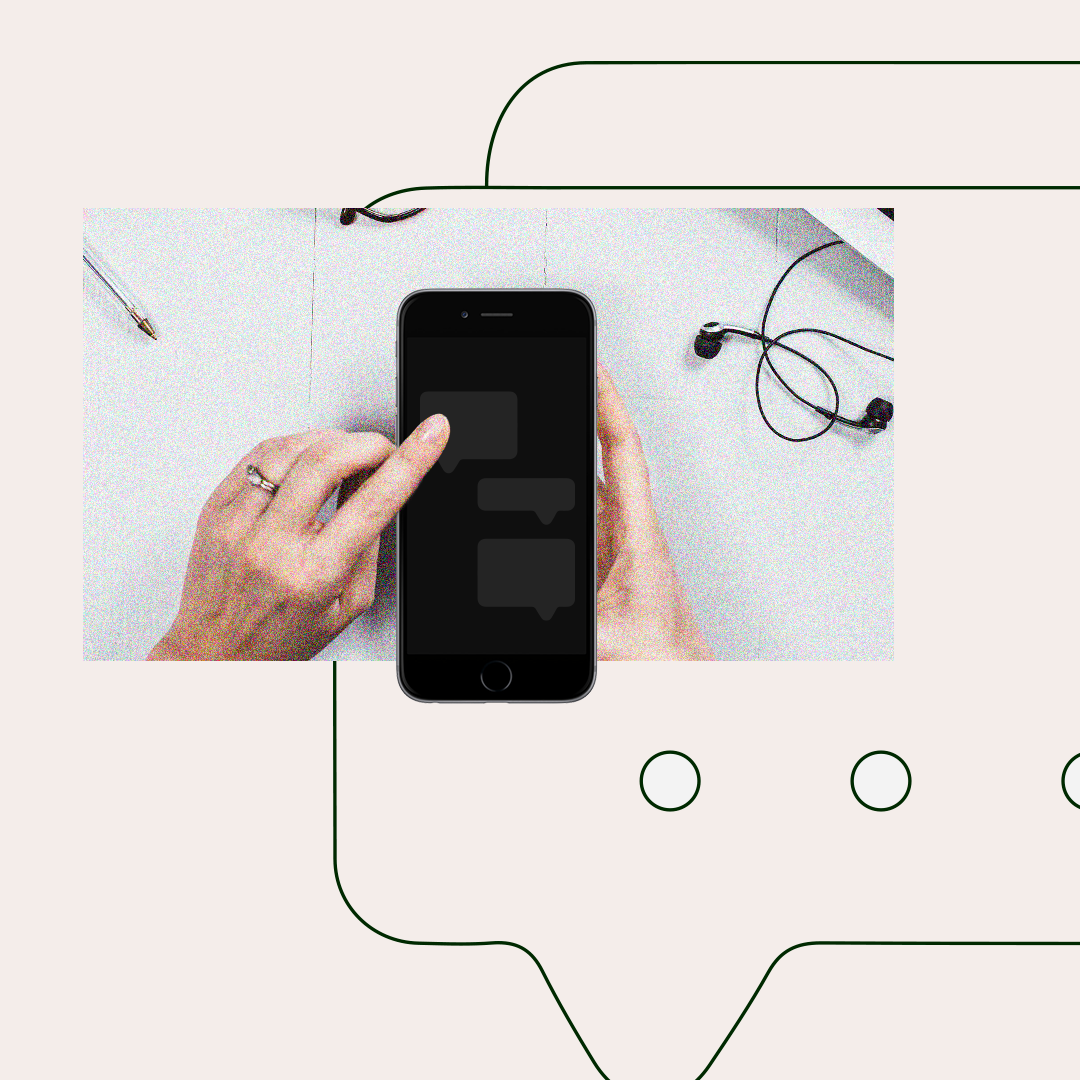
22 Online Shopping Tricks That Will Blow Your Mind
The first rule of online shopping? Never pay full price.
With all the coupon and price trackers (hi, Droplist!), frequent sales, and membership programs, there’s literally no reason you should be paying the sticker price for anything.
But mastering the art of online shopping isn’t just about digital coupon clipping or waiting for a major sale. It’s knowing the right time to buy certain items, signing up for loyalty programs that offer more than spam, and even doing a little work to get a major price adjustment.
In fact, here are 22 online shopping tips that’ll blow your mind...and credit card statement.
The Internet is always open for business so you can shop whenever you want, but sales and promotions generally drop Wednesdays through Fridays so time your shopping if you can.
One of the reasons why flight prices fluctuate is because of the very annoying and difficult-to-defeat game of dynamic pricing.
Location, time of day and week, how many seats are left, and even how often you’ve looked at the price info are factors that go into determining the price of a ticket — which is always higher than how much you’d want to pay.
Beat dynamic pricing and find cheaper prices by clearing all your cookies, going incognito, or even using a VPN for a clear slate. There’s also the adage that Tuesday afternoons are the best times for flight deals, but we’ve found that deals are so frequent and random that the old rule doesn’t always apply.
No one likes spam, but getting 10 percent or 15 percent off your purchase just for putting in your email address doesn’t seem so bad. You’ll also be the first to receive info about sales, which can help you save more cash in the long run and be able to get a sense of its sales schedule to smartly time your purchases. Keep your personal inbox from getting flooded with promo emails by setting up a separate email account.
After you’ve signed up for all the emails, sign up for all the loyalty programs, too. You’ll usually earn points for every dollar spent at the retailer that you can “use” for perks, swag, and even future discounts. Even if you aren’t a real loyalist, at the very least, you’ll get free shipping or a birthday present. For example, Madewell offers members free shipping and returns without hitting a minimum, and Sephora and Ulta both give you free beauty products on your birthday in addition to early access to their annual sales.
We know, we know — you don’t need more emails. But, if you’ve got a trip planned, definitely set up price alerts on Google Flights. You’ll get an email as soon as prices drop so you’ll know when it’s the right time to buy. It also has a nifty function where you can check the price history for your flight so you can see if the price is actually worth jumping on or if you should wait a little longer.

Customer service chatbots can help with just about everything — extending the date for a coupon, getting exclusive discounts that aren’t advertised, honor a price-match policy, and more. Most of them respond immediately too, which is a much better experience than calling a rep only to listen to “hold” music for 16 minutes.
One of the biggest things we’ve been able to use chatbots for are price adjustments, which are offered by more retailers than you’d expect including airline carriers. For example, JetBlue will give you a refund for the difference if the price of your ticket drops within 24 hours, or a credit for the difference if the price drops within five days.
Different retailers have their own windows of time to claim adjustments, but many of them are at least seven days. You don’t even have to know if a company offers a price adjustment, it doesn’t hurt to ask. Setting up a price tracker like Honey's Droplist is an easy and free way to stay on top of price drops.
Buy discounted gift cards at CardPool or Raise, which have huge selections of e-cards for just about every retailer you can think of, and use them on top of discount codes (which aren’t stackable) for max savings.
Social media-savvy brands like Casper and Glossier often announce product launches and sales on Instagram and Facebook.
Additionally, influencers usually post referral codes, which also come with a discount, for their latest brand partnership or collaboration on Instagram and YouTube.
Start following your favorite brands and influencers for updates, and try sliding into their DMs to ask about upcoming promos. If enough followers ask influencers about discount codes, it actually incentivizes them to reach out to brands for potential partnerships.
All major credit cards have some sort of rewards system so you can rack up points to pay for big travel purchases like flights and hotels, or earn cash back that you can trade in for statement credits or well, cash. Some cards have flat rates for different categories (like the Chase Sapphire Reserve earns you 3x on travel and dining), while others have flat rates for rotating categories (for example, Discover earns you 5 percent cashback on gas in Q1, grocery stores in Q2, and so on). If you shop exclusively at Amazon, it’s super helpful to get its store card, which earns you 5 percent on every purchase with no limit.

How many times have you spent an additional 15 minutes looking for the cheapest filler item only to wind up spending another $20 to get free ground shipping that’s worth $7? Exactly.
If you’re tired of getting scammed for free shipping, try ShopRunner. It’s a reasonable $79 annual fee for free two-day shipping with no minimum at hundreds of nation-wide retailers like Kinly, Neiman Marcus, Adorama, and Bloomingdale’s.
More retailers are also offering free shipping to a physical store for pick-up. This is especially helpful when buying clothes, shoes, or accessories so you can try them on immediately and return or exchange as needed without requiring a trip to the post office.
Not to get super creepy on you, but your online shopping habits are definitely being tracked. How else can you explain ads for spring sandals popping up everywhere on your Instagram feed after you Googled them, or ads for a new phone as soon as you looked up prices?
Try scoring a discount by putting items in your cart and then just leaving them there. You’ll get a few reminder emails that you left an item in your cart, and retailers might even follow-up with exclusive discount codes.
New electronics are always great, but they definitely come at a premium. If you’re looking to save on the latest Samsung phone or a pair of Bose workout headphones, try refurbished and open-box items instead of completely new ones. Refurbished means the item has been inspected and restored back to factory settings; while, open box refers to an item that was opened and returned, which retailers can’t sell as new. Open-box is only slightly cheaper than new items, but a great deal nonetheless.
For phones specifically, Apple and Samsung have their own refurb programs that come with one-year warranties, while big box retailers like Best Buy have large selections of refurbished, used, and open-box tech items.
Unsurprisingly, Amazon Warehouse, which houses the mega-seller's used products, has an insanely huge inventory of just about every item you can think of. In addition to standard phones and TVs, you can get Instant Pot pressure cookers, KitchenAid mixers, Roomba vacuums, and more at major discounts.
Each item is inspected to make sure it’s still a quality item and has product descriptions so comprehensive that you won’t even feel like you’re buying a used item.
If you want new electronics, time them with product drops for major savings.
When retailers and warehouses need to clear inventory for new launches, they’ll lower prices on previous models or products from a top competitor.
So when Nikon releases a new camera, scoop up the Sony camera you’ve been eyeing for your next trip.
For wardrobe staples like a down puffer coat or wool trench, seasonal furniture like patio sets or BBQ grills, and seasonal decor like holiday cards or decorations, buy them during the after-season and post-holiday blowout sales. Because retailers need to clear inventory for next season’s items, you’ll score steep discounts and no one will know that it’s from “last season,” which definitely doesn’t exist when it comes to Christmas trees and outdoor tables.
For pantry staples like spices, flour, grains, and oil, and household items like toilet paper, buy them in bulk at Amazon or InstaCart, which is an online grocery shopping service that lets you shop at nearby stores, including everyone’s favorite — Costco. We suggest buying Kirkland Signature brand for bulk pantry items — there’s no real difference in quality compared to a national brand, and it’s so. much. cheaper.
Amazon’s Subscribe & Save program doesn’t get nearly as much love as its Prime shipping, but if you’re not taking advantage of this, you’re sorely missing out. It’s a discounted subscription service for everything you could ever need. It comes in super handy for household items like laundry detergent and dish soap, as well as all the little things you forget to buy until you’re out of it, like toothpaste, contact solution, and pet food. You can subscribe to exactly what you want or need in each shipment, dictate how often you want the items, and skip items for the next shipment if you don’t need it one month. And yes, as with all things Amazon, there’s free shipping.

One of the reasons why houseplants are so expensive is because you’re paying for the pot, so buy each item separately for the best cost savings. Try getting the plant itself at a local nursery, and then the pot at a trendier shop like The Sill or even Urban Outfitters.
If you need bulk supplies for craft projects, hit up your local dollar store and eBay for deals. Wooden dowels, basic glass vases, balloons, and more are so much cheaper than at craft stores; in our experience, most sellers are offering things they’ve bought for special occasions like weddings or birthdays and don’t need anymore. And because you’re not browsing endless aisles of supplies, you won’t be tempted to buy things “just in case” for future projects.
If you’re moving apartments or houses, change your address online at USPS for $1 and get free mail forwarding along with a ton of coupons to places like Wayfair and Overstock.
You can also sign up for Amazon’s Move discount for a 10 percent discount on all apartment-related items, like mattresses, speakers, lamps, and more as long as they’re sold and shipped by Amazon, which is still a very large selection. The discount is automatically applied during checkout and lasts for a limited time (usually a month or two) with a cap of $200, but it’s still a great deal regardless...because rent.
Most people would never think to buy a parking spot in advance, but if you’re heading to a sports event, concert, downtown for dinner — literally anywhere — you can buy a parking spot in advance on SpotHero. It’s a service that helps you reserve and prepay for spots in major cities like Los Angeles, New York, Austin, and more. Most spots are in facilities like parking or airport lots so there’s also no added stress of parallel parking on the street.
See if your credit card offers travel insurance first before paying out of pocket on top of your flight or rental car price. For instance, the Chase Sapphire Reserve covers up to $75,000 in physical damage and theft, thanks to its auto rental collision damage waiver (CDW). Translation: There's no need to elect for that $12 a day insurance fee. You might not have thought it was a perk when you signed up, but it can save you hundreds over time.
Hit up Amazon or AllBookstores to rent — not buy — your textbooks. It’s more eco-friendly and a heck of a lot cheaper than buying new or even used textbooks. Unless you’ve used your textbook like a drawing pad all semester long, you can send your rental back to them without having to worry about bringing it home for the summer or not being able to resell it.
With the exception of getting to test drive your car of choice, you can actually do everything else that comes with buying a new car entirely online. Read all the car blogs for specs and reviews, watch YouTube videos of car “tours,” request history reports from Carfax, and more all from the comfort of your home. Some dealerships even allow you to negotiate over the phone or email, which is way less intimidating than doing it in real life, and ship it directly to you so you’ll never actually have to visit a dealership.
For used cars, you can also buy secondhand cars entirely online since some dealers like Tesla don’t allow test drives. The warehouse will take photos of your exact car so you can look for cosmetic issues like dents or scratches. You will need to pick up the car at the dealership though, but at least you’re driving back in your new ride.

